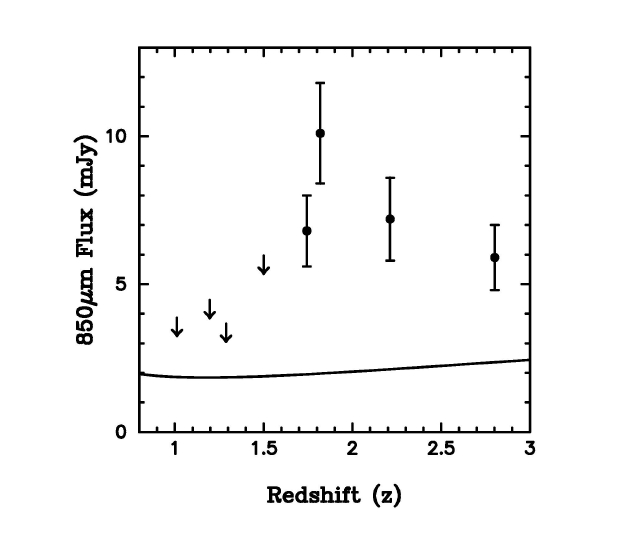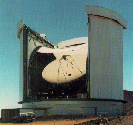


Galaxy spheroids (elliptical galaxies and the bulges of spirals) are dominated by stars. At their hearts lie massive black holes that probably built up their mass by accretion; though they may lie dormant and near-invisible today they were once luminous active galactic nuclei (AGN). It has been known for several years that there is a strong correlation between black hole mass and spheroid mass in nearby galaxies. This means that the formation of these two components must be somehow related.
New submillimetre
observations from the
James Clark Maxwell
Telescope of a sample of X-ray absorbed AGN, originally discovered with
Rosat, reveal that at least
half of them are
forming stars at prodigious rates (eg a thousand solar masses per year).
In
these objects we are
seeing the stellar bulge and massive black hole growing at the same time,
and presumably from the the same reservoir of gas, at rates that could produce
the stellar / black hole mass ratios observed in todays galaxies. All of the
highest redshift sources were detected - see the figure below - which suggests
that the stars in galaxy bulges come from an early epoch of star formation.